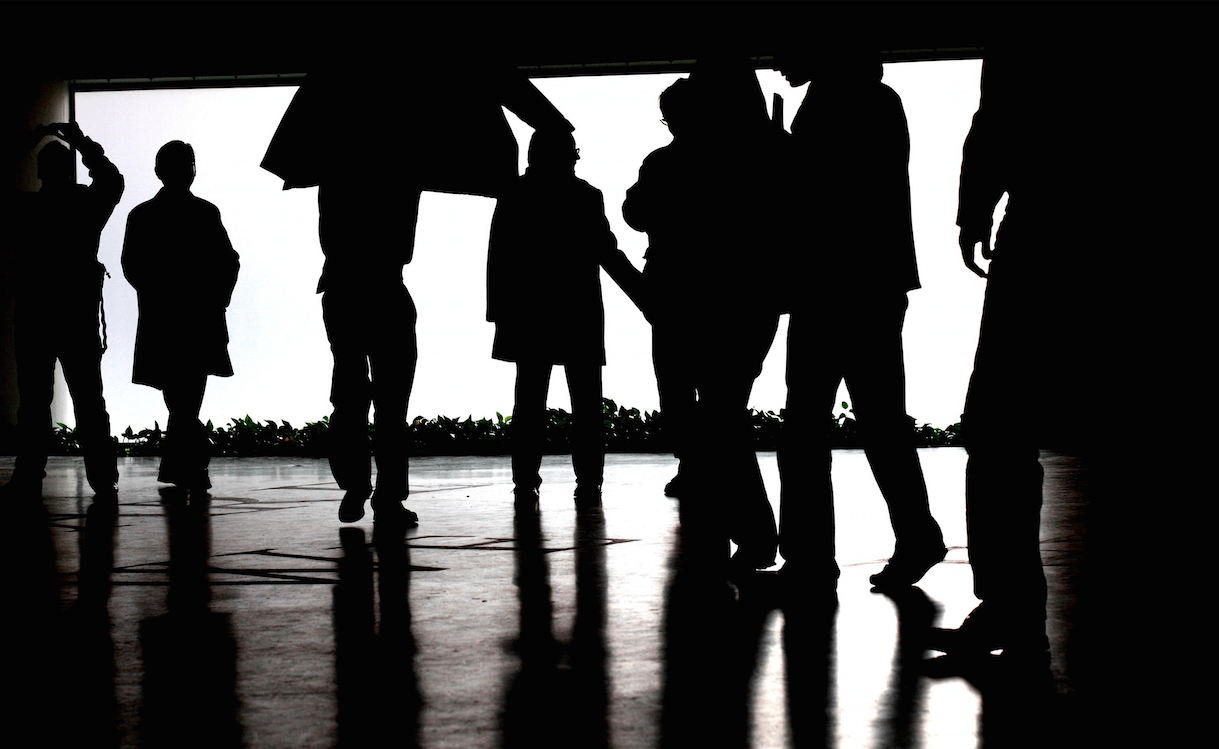Art and Culture
How a Rebellious Scientist Uncovered the Surprising Truth About Stereotypes
Studying the accuracy of stereotypes is risky business. For many, investigation into stereotypes is tantamount to endorsing bigotry.

The Sydney Symposium
At the back of a small room at Coogee Beach, Sydney, I sat watching as a psychologist I had never heard of paced the room gesticulating. His voice was loud. Over six feet tall, his presence was imposing. It was Lee Jussim. He had come to the Sydney Symposium of Social Psychology to talk about left-wing bias in social psychology.
Left-wing bias, he said, was undermining his field. Graduate students were entering the field in order to change the world rather than discover truths.1 Because of this, he said, the field was riddled with flaky research and questionable theories.
Jussim’s talk began with one of the most egregious examples of bias in recent years. He drew the audience’s attention to the paper: “NASA faked the moon landing – therefore (climate) science is a hoax.” The study was led by Stephan Lewandowsky, and published in Psychological Science in 2013. The paper argued that those who believed that the moon landing was a hoax also believed that climate science was a fraud. The abstract stated:
We…show that endorsement of a cluster of conspiracy theories (e.g., that the CIA killed Martin-Luther King or that NASA faked the moon landing) predicts rejection of climate science as well as the rejection of other scientific findings above and beyond commitment to laissez-faire free markets. This provides confirmation of previous suggestions that conspiracist ideation contributes to the rejection of science.
After describing the study and reading the abstract, Jussim paused. Something big was coming.
“But out of 1145 participants, only ten agreed that the moon landing was a hoax!” he said. “Of the study’s participants, 97.8% who thought that climate science was a hoax, did not think that the moon landing also a hoax.”
His fellow psychologists shifted in their seats. Jussim pointed out that the level of obfuscation the authors went to, in order to disguise their actual data, was intense. Statistical techniques appeared to have been chosen that would hide the study’s true results. And it appeared that no peer reviewers, or journal editors, took the time, or went to the effort of scrutinizing the study in a way that was sufficient to identify the bold misrepresentations.
While the authors’ political motivations for publishing the paper were obvious, it was the lax attitude on behalf of peer reviewers – Jussim suggested – that was at the heart of the problems within social psychology. The field had become a community in which political values and moral aims were shared, leading to an asymmetry in which studies that reinforced left-wing narratives had come to be disproportionately represented in the literature. And this was not, to quote Stephen Colbert, because “reality had a liberal bias”. It was because social psychology had a liberal bias.

Jussim explained that within the field, those on the left outnumbered those on the right by a ratio of about 10:1. So it meant that even if left-leaning and right-leaning scientists were equal in their bias, there would be at least ten times more research biased towards validating left-wing narratives than conservative narratives. Adding in the apparent double standards in the peer review process (where studies validating left-wing narratives seemed to be easier to publish) then the bias within the field could vastly exceed the ratio of 10:1. In other words, research was becoming an exercise in groupthink.
***
Jussim appears to have had an anti-authoritarian streak since day one. Born in Brooklyn 1955, his family moved to Long Island when he was twelve. He lost his mother the following year from illness, and after that, he lost his father as well, although this time not from illness, but from grief. It was at this tender age that Jussim entered into a life of self-reliance. Ferociously independent, Jussim describes having little respect for, or deference to, authority figures. In high school he says he purposely made life miserable for his teachers, and later he would become an anti-war activist.
In 1975, at the age of 20, he was a university dropout. He did not return again to study until four years later, when he began undergraduate psychology, and it was not until 1986, at the age of 30, that Jussim achieved his first publication. By this stage he was already married with a baby.
Jussim may not have known at this point that he was destined to continue living a life of non-conformity. He was a reformed delinquent and anti-Vietnam war activist. He had his PhD and a publication under his belt. He had settled down. His former life of rabble rousing and trouble making was over.
Or so he thought.
Very early in his career, Jussim faced a crisis of sorts. An early mentor, Jacquelynne Eccles, handed him some large datasets gathered from school children and teachers in educational settings. He tried testing the social psychology theories he had studied, but consistently found that his data contradicted them.
Instead of finding that the teachers’ expectations influenced the students’ performances, he found that the students’ performances influenced the teachers’ expectations. This data “misbehaved”. It did not show that stereotypes created, or even had much influence on the real world. The data did not show that teachers’ expectations strongly limited students’ performances. It did not show that stereotypes became self-fulfilling prophecies. But instead of filing his results away into a desk drawer, Jussim kept investigating – for three more decades.
The Crisis in Social Psychology
Some months after Jussim’s presentation at the 2015 Sydney Symposium, the results of the Reproducibility Project in psychology were announced. This project found that out of 100 psychological studies, only about 30%-50% could be replicated.
The reproducibility project follows in the wake of a crisis that has engulfed social psychology in recent years. A slew of classic studies have never been able to be fully replicated. (Replication is a benchmark of the scientific method. If a study cannot be replicated, it suggests that the results were a fluke, and not an accurate representation of the real world).
For example, Bargh, Chen and Burrows published one of the most famous experiments of the field in 19963. In it, students were divided into two groups: one group received priming with the stereotype of elderly people; the other students received no priming (the control group). When the students left the experiment, those who had been primed with the stereotype of the elderly, walked down a corridor significantly more slowly than the students assigned to the control. While it has never been completely replicated, it has been cited over 3400 times. It also features in most social psychology textbooks.
Another classic study by Darley & Gross published in 1983, found that people applied a stereotype about social class when they saw a young girl taking a math test, but did not when they saw a young girl not taking a math test.5 Two attempts at exact replication have failed.6 And both replication attempts actually found the opposite pattern – that people apply stereotypes when they have no other information about a person, but switch them off when they do.6
In the field of psychology, what counts as a “replication” is controversial. Researchers have not yet reached a consensus on whether a replication means that an effect of the same size was found. Or that an effect size was found within the same confidence intervals. Or whether it is an effect in the same direction. How one defines replication will likely impact whether one sees a “replication” as being successful or not. So while some of social psychology’s classic studies have not been fully replicated, there have been partial replications, and a debate still rages around what exactly constitutes one. But here’s the kicker: even in the partial replications of some of these stereotype studies, the research has been found to be riddled with p-hacking.4 (P-hacking refers to the exploitation of researcher degrees of freedom until a desirable result is found).
***
When I went through university as a psychology undergraduate Jussim’s work was not on the curriculum. His studies were not to be found in my social psychology textbook. Nor was Jussim ever mentioned in the classroom. Yet the area of study Jussim has been a pioneer of – stereotype accuracy – is one of the most robust and replicable areas ever to emerge from the discipline.
To talk about stereotypes, one has to first define what they are. Stereotypes are simply beliefs about a group of people. They can be positive (children are playful) or they can be negative (bankers are selfish), or they can be somewhere in between (librarians are quiet). When stereotypes are defined as beliefs about groups of people (true or untrue), they correlate with real world criteria with effect sizes ranging from .4 to .9, with the average coming in somewhere around .8. (This is close to the highest effect size that a social science researcher can find, an effect size of 1.0 would mean that stereotypes correspond 100% to real world criteria. Many social psychological theories rest on studies which have effect sizes of around .2.)
Jussim and his co-authors have found that stereotypes accurately predict demographic criteria, academic achievement, personality and behaviour.7 This picture becomes more complex, however, when considering nationality or political affiliation. One area of stereotyping which is consistently found to be inaccurate are the stereotypes concerning political affiliation; right-wingers and left wingers tend to caricature each others personalities, most often negatively so.7

Lest one thinks that these results paint a bleak picture of human nature, Jussim and his colleagues have also found that people tend to switch off some of their stereotypes – especially the descriptive ones – when they interact with individuals.7 It appears that descriptive stereotypes are a crutch to lean on when we have no other information about a person. When we gain additional insights into people, these stereotypes are no longer useful. And there is now a body of evidence to suggest that stereotypes are not as fixed, unchangeable and inflexible as they’ve historically been portrayed to be.8
A Cool Reception
Studying the accuracy of stereotypes is risky business. For many, investigation into stereotypes is tantamount to endorsing bigotry. To understand why this is the case, one has to take a long view of the discipline’s history.
Social psychology arose from the ashes of World War 2. An entire generation had to come to terms with the legacy of the war, and the study of prejudice and authoritarianism naturally captured their imaginations. Gordon Allport, a mentor of Stanley Milgram, conceptualised stereotypes in his 1954 book The Nature of Prejudice as inaccurate, pernicious and unshakeable, and influential in shaping the social world9. From this point onwards, this conception has largely remained unchallenged.
Reactions to Jussim’s findings about the accuracy of stereotypes have varied on the scale between lukewarm and ice cold. At Stanford this year after giving a talk, an audience member articulated a position reflected by many within his field:
“Social psychologists should not be studying whether people are accurate in perceiving groups! They should be studying how situations create disadvantage.”
Jussim has heard this position over and over again. Not just from students, but also colleagues. One might find it surprising that psychology researchers would become so invested in shutting down research they find politically unbearable. But one shouldn’t be.
It is not uncommon for social psychologists to list “the promotion of social justice” as a research topic on their CVs, or on their university homepages. One academic, John Jost at New York University, who argues that conservatism is a form of motivated cognition, runs what he calls the Social Justice Lab. Within the scientific community, the blending of science with political activism is far from being frowned upon. One only has to take a brief look at Twitter to see that scientists are often in practice of tweeting about “white privilege”, “women in STEM”, “structural disadvantage”, “affirmative action”, and “stereotypes”. For many scientists, the crusade to change the world is seen as part of one’s job description.
Jussim has weathered aloof, and at times openly hostile attitudes to his work for virtually three decades. In an email to me earlier in the year, he wrote that he felt like his work life has been lived in solitary confinement. It is possible that Jussim’s citation count – or impact factor – has been artificially suppressed. And for renegade academics such as Jussim to get published, they often must resort to sugar-coating and camouflaging their results, leaving important findings out of journal titles and abstracts.
Yet he points out that despite the hostility towards stereotype accuracy, he has been well treated by social psychology – having been given an American Psychological Association Early Career Award in 1997 – and being cited by his peers over 6000 times. Jussim also points out that while doing research that breaks taboos and undermines political narratives is hard, it is not impossible. Ultimately the scientific method wins.
It is too early to know how research into stereotypes will unfold in the future. And we do not know yet if social psychology will ever be able to achieve ideological diversity, or realistically address its left-wing bias. What is certain, however, is that despite producing work that has been unwelcome and unpopular, Lee Jussim has remained a faithful servant to the scientific method. Even in the face of great personal costs.
Claire Lehmann is the editor of Quillette. Follow her on Twitter @clairlemon
References
- Jussim, Crawford, Stevens, Anglin, & Duarte (in press). Can high moral purposes undermine scientific integrity? To appear in J. Forgas, P. van Lange, & L. Jussim (eds), The Sydney Symposium on the Social Psychology of Morality.
- Lewandowsky, S., Oberauer, K., & Gignac, G. E. (2013). NASA faked the moon landing—therefore,(climate) science is a hoax an anatomy of the motivated rejection of science. Psychological science, 24(5), 622-633.
- Bargh, J. A., Chen, M., & Burrows, L. (1996). Automaticity of social behavior: Direct effects of trait construct and stereotype activation on action. Journal of personality and social psychology, 71(2), 230.
- Lakens, D. (2014). Professors are not elderly: Evaluating the evidential value of two social priming effects through p-curve analyses. Available at SSRN 2381936.
- Darley, J. M., & Gross, P. H. (1983). A hypothesis-confirming bias in labeling effects. Journal of Personality and Social Psychology, 44(1), 20.
- Baron, R. M., Albright, L., & Malloy, T. E. (1995). The effects of behavioral and social class information on social judgment. Personality and Social Psychology Bulletin, 21, 308-315.
- Jussim, L., Cain, T. R., Crawford, J. T., Harber, K., & Cohen, F. (2009). The unbearable accuracy of stereotypes. Handbook of prejudice, stereotyping, and discrimination, 199-227.
- Jussim, L., Harber, K. D., Crawford, J. T., Cain, T. R., & Cohen, F. (2005). Social reality makes the social mind: Self-fulfilling prophecy, stereotypes, bias, and accuracy. Interaction Studies, 6(1), 85-102.
- Allport, G. W. (1979). The nature of prejudice. Basic books.
- Jussim, L. (1997). Distinguished Scientific Awards for an Early Career Contribution to Psychology. American Psychologist, 52(4), 322-324.
- Duarte, J. L., Crawford, J. T., Stern, C., Haidt, J., Jussim, L., & Tetlock, P.E. (2015). Political diversity will improve social psychological science. Behavioral and Brain Sciences. doi: 10.1017/S0140525X14000430 [See summary here].






